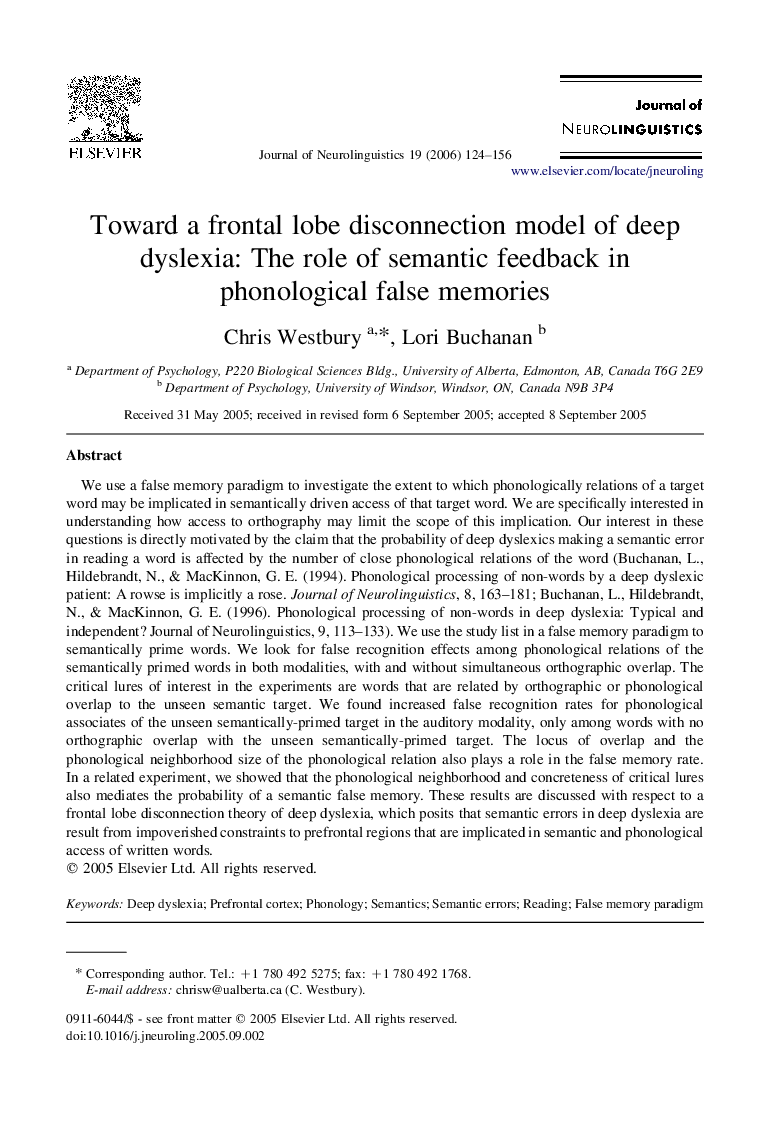| Article ID | Journal | Published Year | Pages | File Type |
|---|---|---|---|---|
| 912126 | Journal of Neurolinguistics | 2006 | 33 Pages |
We use a false memory paradigm to investigate the extent to which phonologically relations of a target word may be implicated in semantically driven access of that target word. We are specifically interested in understanding how access to orthography may limit the scope of this implication. Our interest in these questions is directly motivated by the claim that the probability of deep dyslexics making a semantic error in reading a word is affected by the number of close phonological relations of the word (Buchanan, L., Hildebrandt, N., & MacKinnon, G. E. (1994). Phonological processing of non-words by a deep dyslexic patient: A rowse is implicitly a rose. Journal of Neurolinguistics, 8, 163–181; Buchanan, L., Hildebrandt, N., & MacKinnon, G. E. (1996). Phonological processing of non-words in deep dyslexia: Typical and independent? Journal of Neurolinguistics, 9, 113–133). We use the study list in a false memory paradigm to semantically prime words. We look for false recognition effects among phonological relations of the semantically primed words in both modalities, with and without simultaneous orthographic overlap. The critical lures of interest in the experiments are words that are related by orthographic or phonological overlap to the unseen semantic target. We found increased false recognition rates for phonological associates of the unseen semantically-primed target in the auditory modality, only among words with no orthographic overlap with the unseen semantically-primed target. The locus of overlap and the phonological neighborhood size of the phonological relation also plays a role in the false memory rate. In a related experiment, we showed that the phonological neighborhood and concreteness of critical lures also mediates the probability of a semantic false memory. These results are discussed with respect to a frontal lobe disconnection theory of deep dyslexia, which posits that semantic errors in deep dyslexia are result from impoverished constraints to prefrontal regions that are implicated in semantic and phonological access of written words.
